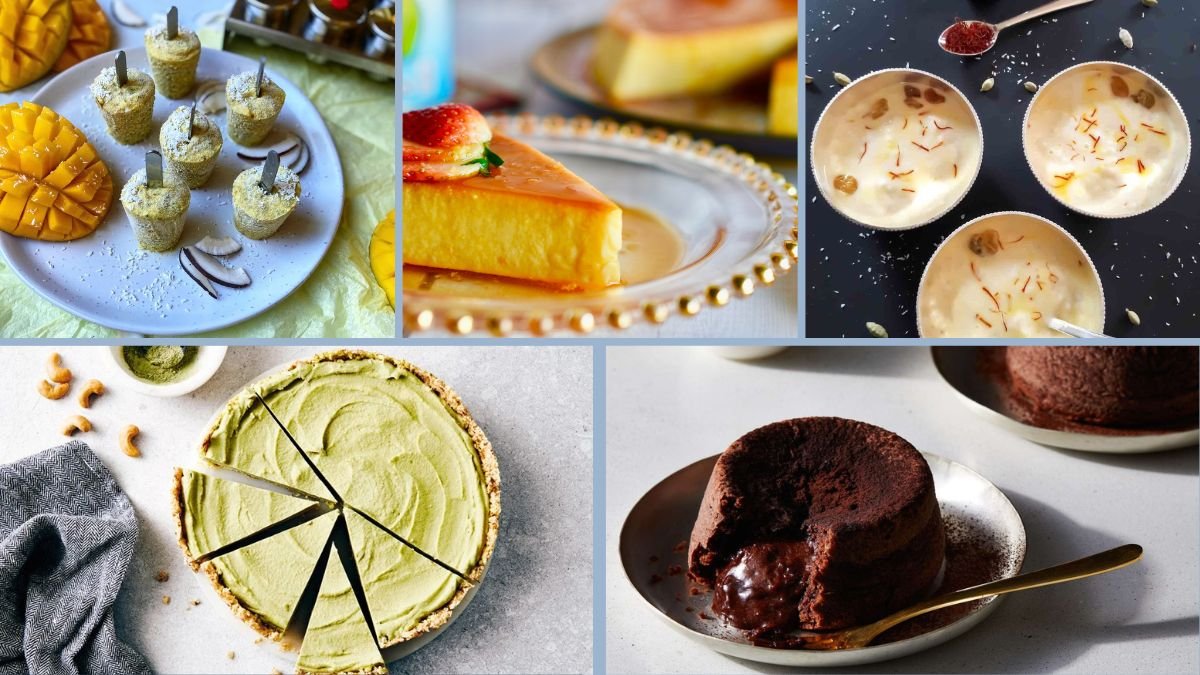Coconut — with its creamy flesh, fragrant milk, and crystalline sugar-laced flakes — has long been a favorite ingredient in sweet indulgences. It lends a tropical aroma, velvety texture, and natural richness that few other flavors can match. In this article, we bring you nine of the best coconut desserts ever created, each one vegetarian, each one shining in its own way. From classics to modern twists, the journey through coconut’s versatility is both mouthwatering and inspiring.
1. Classic Coconut Macaroons
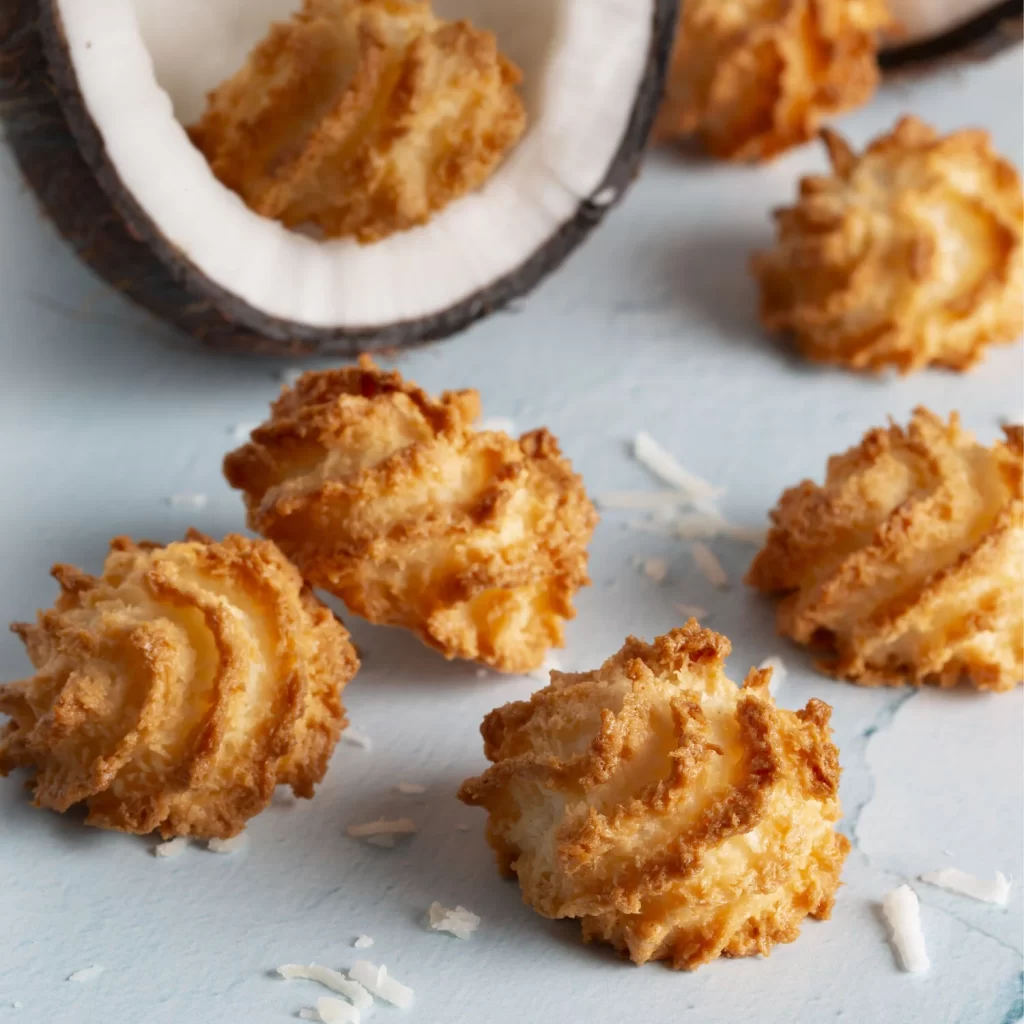
What it is: A simple, chewy cookie made largely from shredded coconut, sugar, egg whites, and sometimes a touch of vanilla or almond extract.
Why it’s special: The beauty lies in its simplicity. When baked just right, the edges become lightly golden and crisp, while the centers remain soft and moist. The aroma of toasted coconut fills the kitchen.
Ingredients & technique:
- Coconut: Use high quality, unsweetened shredded coconut so the flavor isn’t overly processed.
- Binder: Egg whites are beaten until just foamy; they help the macaroon keep shape.
- Sweetener & flavor: Granulated sugar (or even brown sugar for depth), a little vanilla or almond extract.
- Baking tips: Parchment‑lined baking sheet, moderate oven (about 160‑170 °C), bake until bottoms are golden but not burnt, then allow to cool fully — they firm up as they cool.
Variations: Dip bottoms in dark chocolate; top with a maraschino cherry; add a sprinkle of lime zest.
2. Coconut Panna Cotta with Mango Coulis
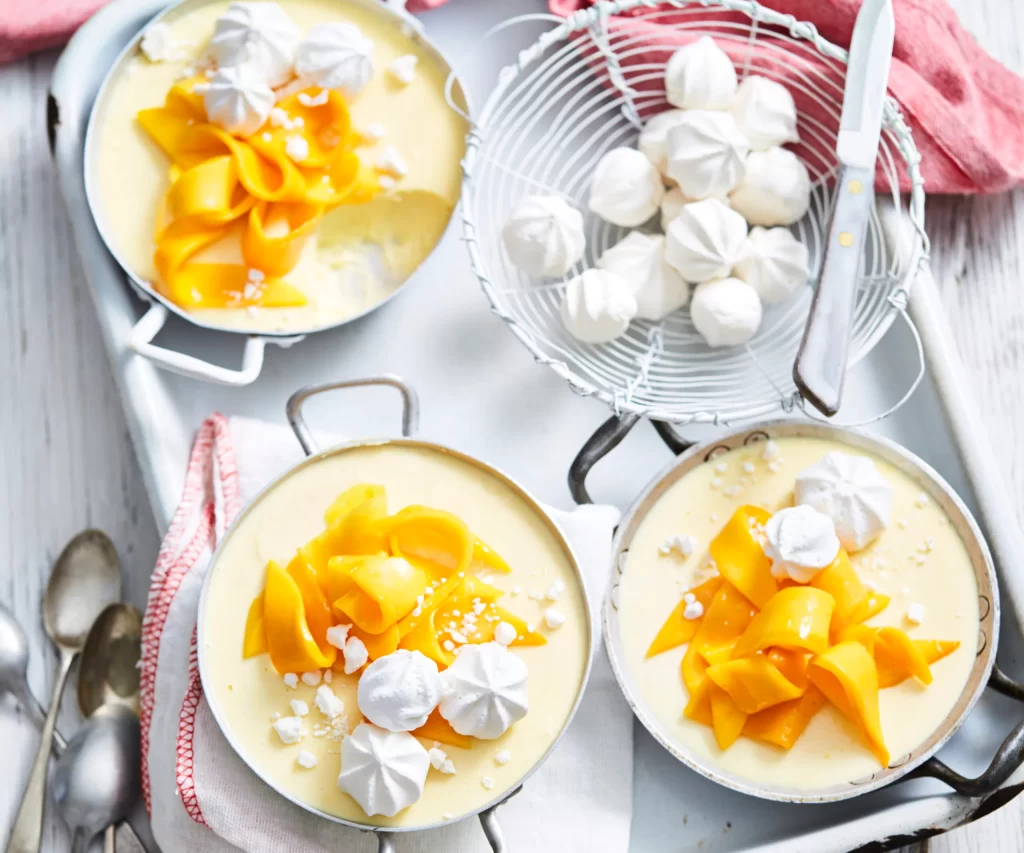
What it is: An Italian‑style cream dessert (traditionally made with cream) adapted here using coconut milk to set a delicate, silky panna cotta, paired with vibrant mango coulis.
Why it’s special: Coconut milk brings a luscious creaminess without dairy, complementing the floral and fruity sweetness of mango. The contrast of texture — smooth panna cotta against zesty coulis — is sublime.
Ingredients & technique:
- Coconut milk & cream: Full‑fat coconut milk (or coconut cream) plus sugar, gently heated.
- Gelling agent: Gelatin or agar‑agar (for vegan version), dissolved properly so the panna cotta sets without graininess.
- Mango coulis: Fresh ripe mango, sugar or honey, a splash of lime juice, blended and strained for smooth texture.
Tips: Chill for at least 4 hours (overnight is best). Serve cold with a garnish of fresh mint or a small wedge of mango.
3. Coconut Rice Pudding (Kheer / Payasam)
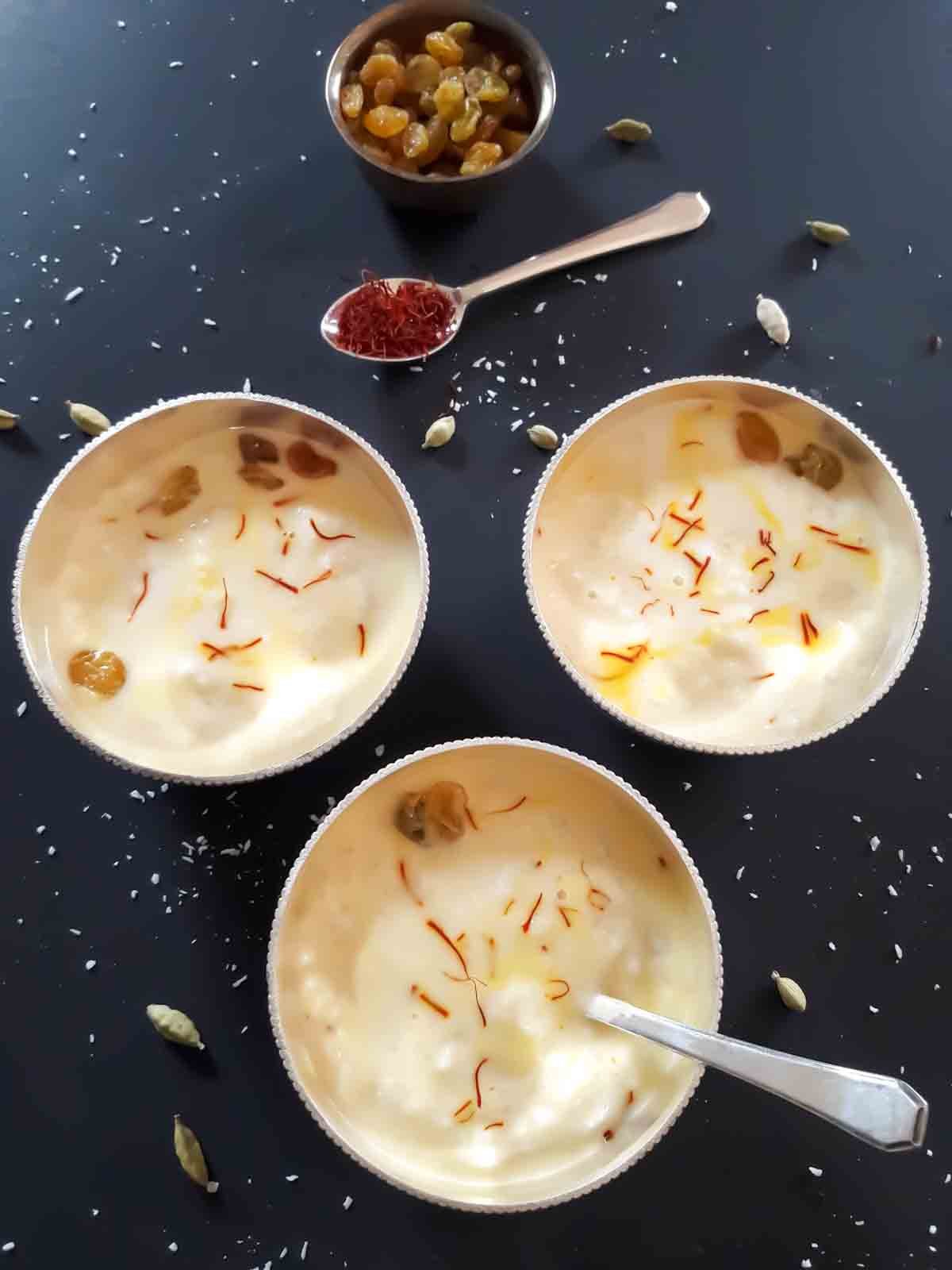
What it is: A creamy pudding made with rice simmered in coconut milk, flavored with cardamom, and often enriched with nuts and raisins.
Why it’s special: Coconut rice pudding evokes home, comfort, and traditions. The grains of rice, soft and plump, swimming in a fragrant sweet coconut liquid, bring peaceful satisfaction.
Ingredients & technique:
- Rice: Short‑grained or medium‑grained, washed and sometimes soaked briefly.
- Coconut milk: Use coconut milk in stages — part for cooking, extra toward the end to thicken and enrich.
- Flavorings: Cardamom pods (crushed), jaggery or sugar, chopped nuts like cashews or pistachios, raisins.
- Cooking tips: Stir often so rice doesn’t stick; cook low and slow. If the pudding becomes too thick, thin with additional coconut milk.
Serving suggestions: Warm or chilled. Garnish with slivered nuts, edible rose petals, perhaps a sprinkle of saffron threads.
4. Coconut & Matcha Mousse
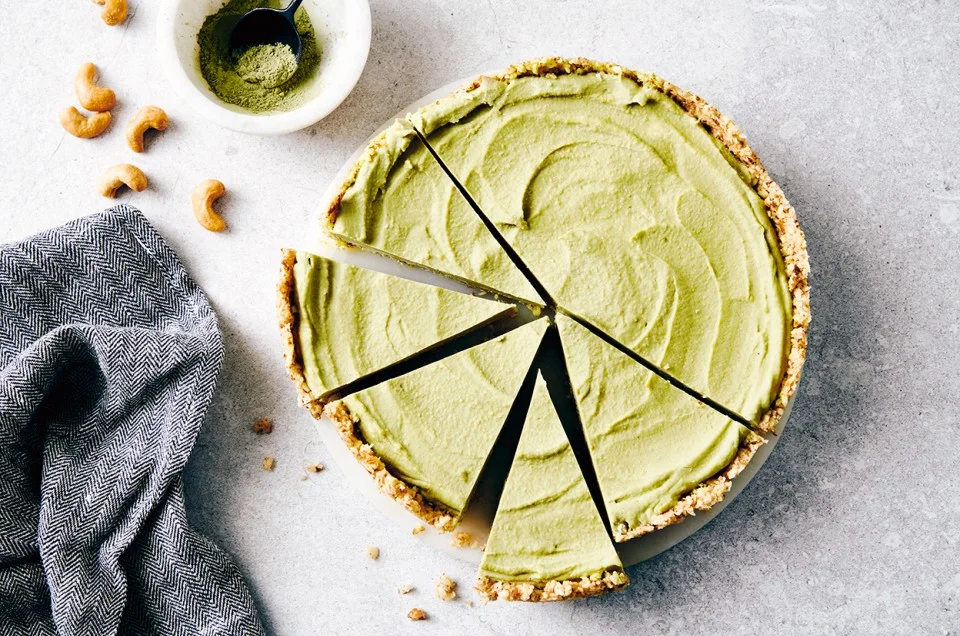
What it is: A light, airy mousse combining creamy coconut cream with the vegetal bitterness of matcha (green tea powder).
Why it’s special: This dessert balances richness and lightness; coconut’s sweetness is tamed by matcha’s earthy tones. Visually, the pale green hue is elegant.
Ingredients & technique:
- Coconut cream: Whipped to create lift (ensure the cream is properly chilled).
- Matcha: High‑quality ceremonial or culinary matcha sifted to avoid lumps.
- Sweetener: Fine sugar or alternatives like agave or maple syrup.
- Stabilization: Some versions use a little gelatine or agar to help the mousse hold shape.
Tips: Whip coconut cream until stiff peaks form. Fold in matcha mixture gently. Chill thoroughly for a few hours. Serve with a dusting of matcha or coconut flakes.
5. Coconut Tres Leches Cake (Three‑Milk Cake)
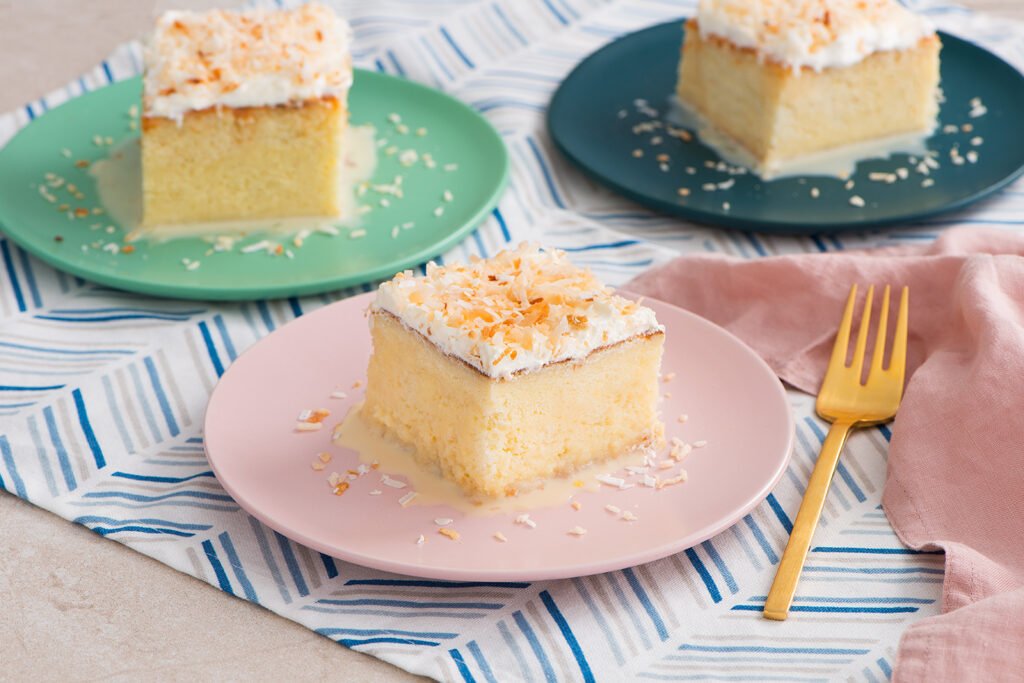
What it is: A spongy cake that’s soaked in three kinds of milk—traditionally evaporated milk, condensed milk, and whole milk—here adapted to incorporate coconut milk or cream as one (or more) of the milks.
Why it’s special: Moist doesn’t even begin to describe it. Every slice drips with milky, coconut‑infused richness. The sponge soaks up every drop of flavor.
Ingredients & technique:
- Sponge cake base: Light, airy, often with egg whites beaten to soft peaks.
- Milk soak: A mixture of coconut milk, condensed milk (or coconut condensed milk), maybe regular milk or cream. Sometimes coconut cream to amplify.
- Topping: Whipped cream (can be coconut whipped cream) often with a dusting of cinnamon or coconut flakes.
Tips: After baking the cake, prick it all over with a fork to allow the milk soak to permeate. Let it cool, then pour the milk mixture slowly. Chill overnight for best results.
6. Coconut & Chocolate Lava Cake
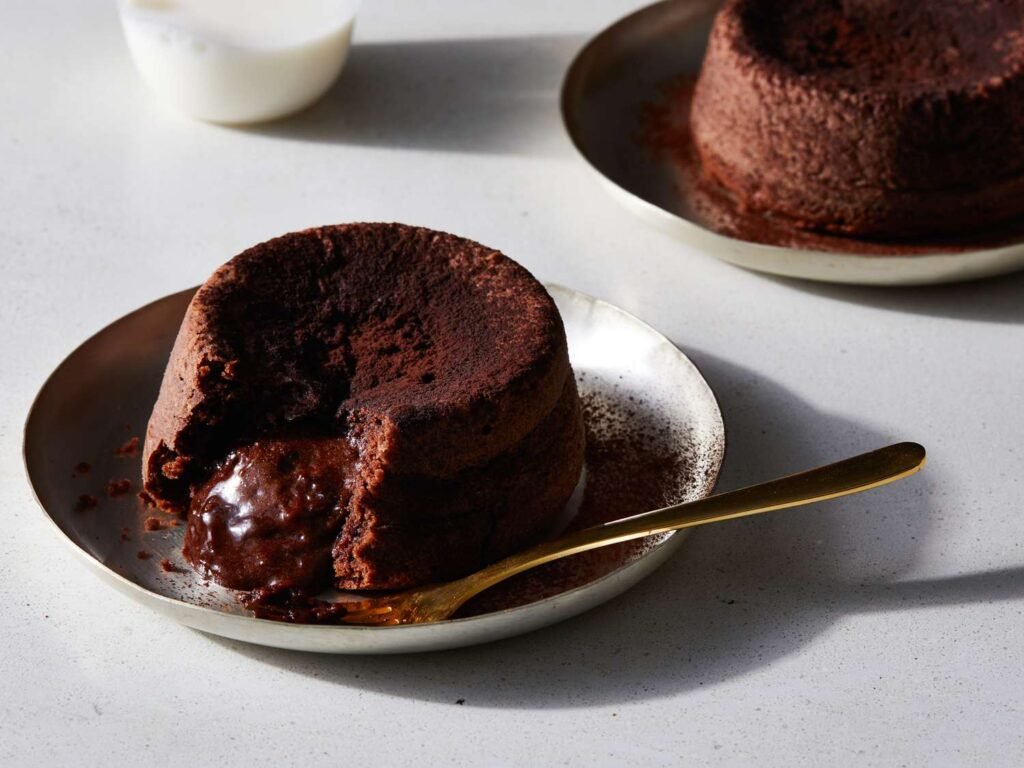
What it is: Individual molten chocolate cakes with a flowing centre, encased in a shell infused or partially filled with coconut.
Why it’s special: The contrast between the warm, gooey chocolate center and the crisp‑yet‑moist outer shell enriched with coconut is magical. The coconut aroma lifts the decadence of the chocolate.
Ingredients & technique:
- Chocolate: Use good quality dark or semi‑sweet chocolate.
- Coconut: Either mix shredded coconut into the batter or use coconut milk (or cream) in the batter. Some recipes place a spoonful of coconut cream in the center.
- Baking: High heat, short time. The outsides set; the inside remains molten.
Serving suggestions: Dust with powdered sugar or cocoa powder. Accompany with a scoop of coconut ice cream or fresh berries.
7. Coconut Tart with Passion Fruit Glaze
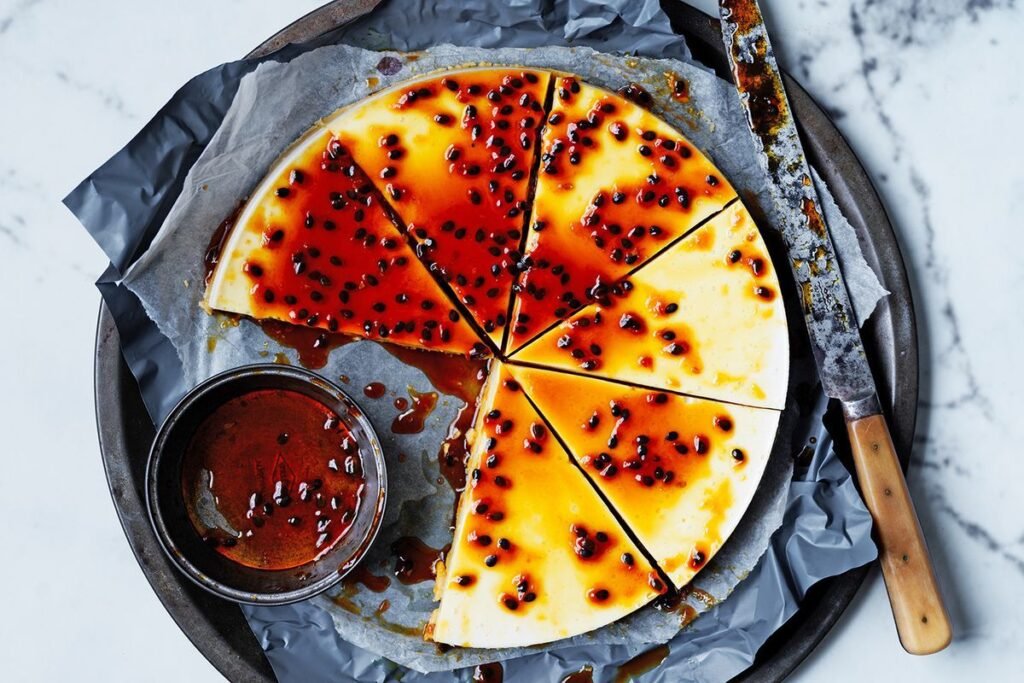
What it is: A crisp tart shell filled with a rich coconut ganache or coconut custard, topped with a vivid passion fruit glaze.
Why it’s special: The tart provides structure, the coconut filling supplies lush texture and vanilla sweetness, and the passion fruit glaze brings bright acidity to cut through the richness.
Ingredients & technique:
- Tart shell: Shortcrust pastry (butter or vegetable fat), baked blind till golden.
- Coconut filling: Could be coconut custard (using coconut milk and eggs) or a coconut ganache (coconut cream + chocolate).
- Passion fruit glaze: Fresh passion fruit pulp, sugar, maybe a gelling agent or reduction to concentrate flavour.
Tips: Blind‑bake the shell to avoid soggy base. Ensure filling is smooth. Glaze just before serving so it remains glossy.
8. Coconut Ice Cream with Tropical Fruit Salsa
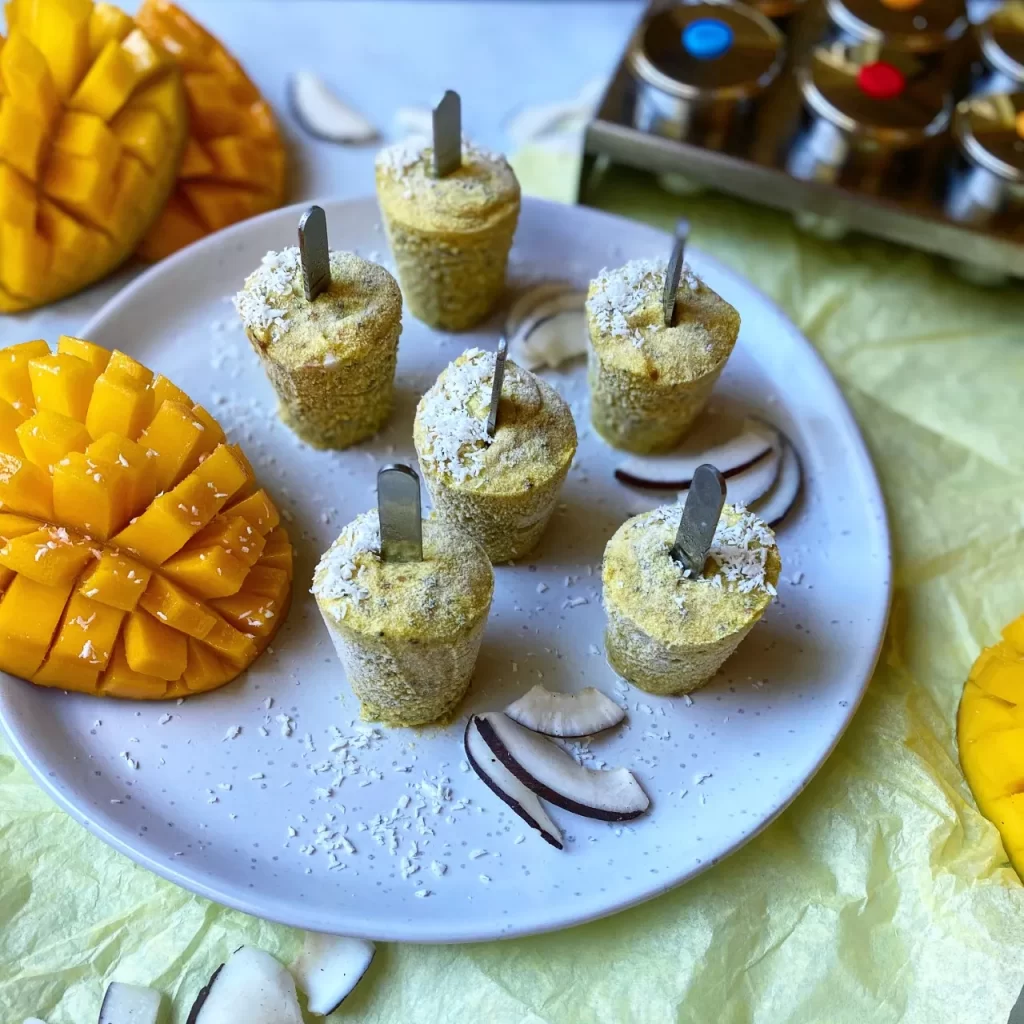
What it is: Creamy coconut ice cream (dairy‑free or with cream), served with a fresh salsa of tropical fruits like pineapple, mango, kiwi, and maybe a splash of lime or mint.
Why it’s special: A frozen dessert that manages to be indulgent yet refreshing. Coconut gives a silky base while the fruit salsa adds brightness, contrast, and bursts of flavor.
Ingredients & technique:
- Ice cream base: Coconut milk or coconut cream, sugar, sometimes vanilla or a pinch of salt. Churned if using an ice cream maker.
- Fruit salsa: Seasonal tropical fruits, diced small; lime juice and optionally some chopped fresh herbs like mint or basil.
- Dairy‑free option: Use just coconut cream and a stabilizer if needed (depending on the recipe).
Serving suggestion: Scoop ice cream, spoon fruit salsa over, garnish with shredded coconut or toasted coconut flakes.
9. Coconut & Caramel Flan
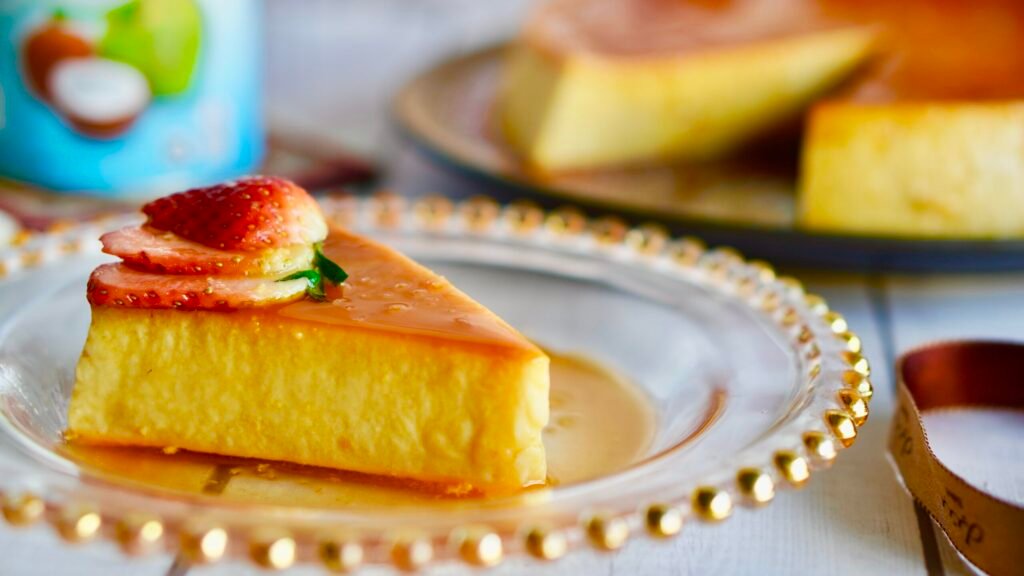
What it is: A creamy caramel flan (crème caramel) made with coconut milk replacing (or supplementing) some or all of the dairy, with a silky caramel top.
Why it’s special: The lushness of coconut milk blended with the golden caramel gives you a dessert that’s at once classic and tropical. It wiggles, it glows, and it melts in the mouth.
Ingredients & technique:
- Caramel layer: Sugar heated until amber, then poured into moulds.
- Custard base: Coconut milk (full‑fat), eggs (or vegan alternatives), sugar, possibly vanilla. Gently baked in a water bath (bain‑marie).
- Set & unmould: After baking, cool to room temperature then refrigerate for several hours so it holds its shape.
Tips: Use low heat for caramel so it doesn’t burn. Baking in a water bath ensures a smooth texture without cracks. Unmould by running a knife around edges and inverting onto a plate.
Why These Coconut Desserts Stand Out
Here are some cross‑dessert insights that explain why these recipes make the “best” cut:
- Texture variety: From the chewiness of macaroons to the silk‑smooth flan, to the airy cake and frozen ice cream, these desserts exploit all the ways coconut can add richness, moisture, and crispness.
- Flavor balance: Coconut is sweet, fatty, and fragrant. The best recipes pair it with contrasting notes — citrus, spice (cardamom, vanilla), tropical fruits, chocolate, or tartness (passion fruit, mango).
- Versatility in diet: Many of these can be made fully vegan by replacing dairy with coconut cream, agar instead of gelatin, or using plant‑based whipping creams. All are naturally vegetarian.
- Visual appeal: Coconut lends itself to beautiful presentation — snow‑white creams, golden browns, tropical garnishes, toasted flakes, color contrasts.
Tips for Working with Coconut
To get the best results in making these desserts:
- Choose your coconut format wisely
- Coconut milk / cream: Full fat gives richness; light versions won’t give same mouthfeel.
- Shredded or desiccated coconut: Unsweetened preferred; toasting adds nuttiness.
- Fresh coconut: Ideal flavour if available and handled well.
- Manage moisture
Coconut milk and cream have a lot of water; balance with thickening agents and ignition of moisture during cooking (e.g., simmering to reduce) so dessert isn’t too loose. - Use gentle heat
Many coconut‑based mixtures can curdle or separate if overheated — custards, flans, panna cotta. Low simmer, slow cook, always stirring. - Balance sugar well
Coconut itself has sweetness and richness. Over‑sweetening can mask natural coconut flavor. Try tasting batters or fillings and adjust. - Garnish to elevate presentation
Toasted coconut flakes, fresh tropical fruit, zest, edible flowers, mint — small touches raise dessert from “home baked” to “restaurant quality.”
Conclusion
Coconut offers a world of dessert possibilities — from chewy cookies and delicate custards to frozen treats and tropical‑tasting cakes. The nine desserts above represent some of the most delicious and well‑crafted options: each one celebrates coconut in its various forms, textures, and pairings. In your thesis, these could serve both as recipe case studies and as explorations of how ingredient substitution (like dairy → coconut) or cross‑cultural flavor pairings enhance dessert development.
Whether for nostalgia (rice pudding), modern flair (matcha mousse), or decadent indulgence (lava cake, flan), these coconut desserts show that simplicity and creativity can go hand in hand. May your thesis sweeten knowledge just like coconut sweetens dessert.
